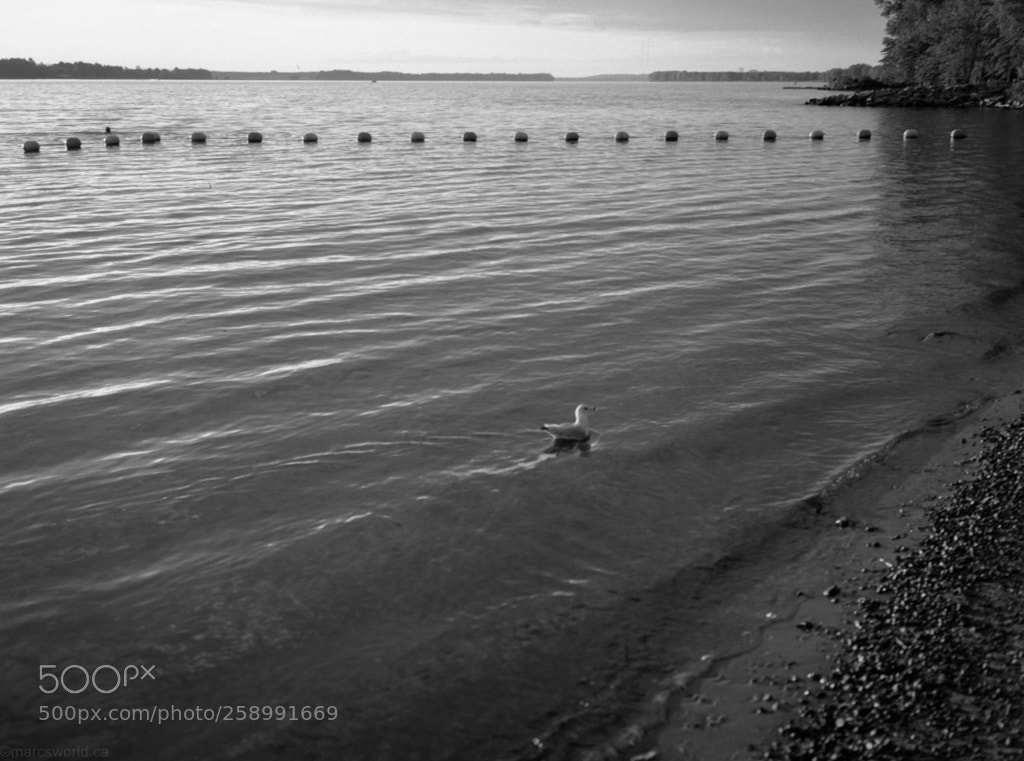
tiistai 29. toukokuuta 2018
Corral. Limits. by marcsworlddotca (500px.com/marcsworlddotca)

maanantai 28. toukokuuta 2018
No easy way out by Frank_Verbreyt (500px.com/Frank_Verbreyt)

PictureCorrect.com: How to Use a White Backdrop with Studio Portrait Photos
A white wall is more versatile than you might think. If you have a perfectly white wall in your studio (or you can create one using some props) you have a background that you can manipulate to create any number of different looks. Mark Wallace from Adorama explains the 50 Shades of White:
For this video Wallace uses a giant, white seamless backdrop.
Two Exposures?
An important concept to consider when using flash is that you’re creating two exposures: one for the flash and the other for the ambient light. The ambient light can be anything—the sun, the CFL lamps inside a room, and so on. You can control these two exposures independent of one another.
Controlling Ambient Light
So, how do you control the ambient light?
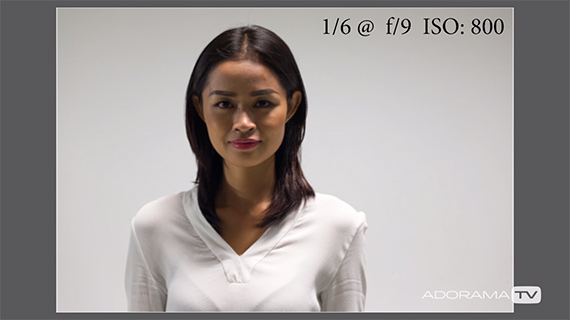
Base Exposure with Ambient Light Only
The base exposure shot (above) was taken at f/9 and ISO 800 using aperture priority mode. The model and the background are decently exposed and, more importantly, the background looks white. To eliminate the background—or at least turn it black—he underexposes the shot.
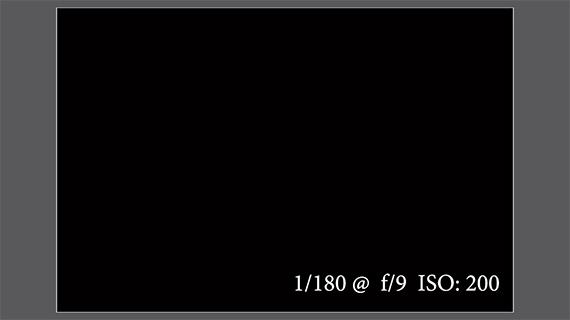
Underexposing eliminates the ambient light in the frame.
The resulting shot (above) at ISO 200, 1/180 second, and f/9 turns the background (and the rest of the shot) completely black.
As Wallace brings in the flash, it allows him to control the amount of light that falls on the wall. The Inverse Square Law kicks in.
Inverse Square Law
Now, to understand how this works, (changing a white wall into gray or completely black or anything in between) you need to have some idea about how light behaves. Specifically, the concept of the Inverse Square Law.
“It’s the law that illustrates how the power of the light falls off from the source.”
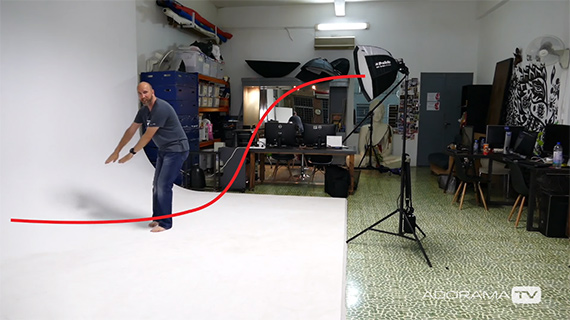
Light Intensity
Light intensity is very high close to the source and then it drops off dramatically and flattens out. This knowledge helps in controlling the amount of light that falls on the wall—or in other words, it helps to darken the wall.
To illustrate, the first shot was taken with the model very close to the light. Shot at 1/180 second (sync speed), f/8 and ISO 200, the exposure clearly shows the white wall as very dark while the model is well exposed.
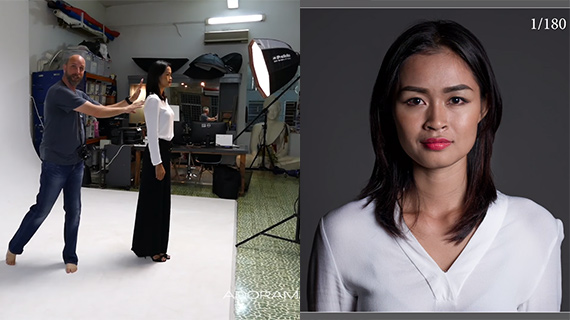
In the second shot, the model stood much closer to the white wall. Wallace used the same settings.
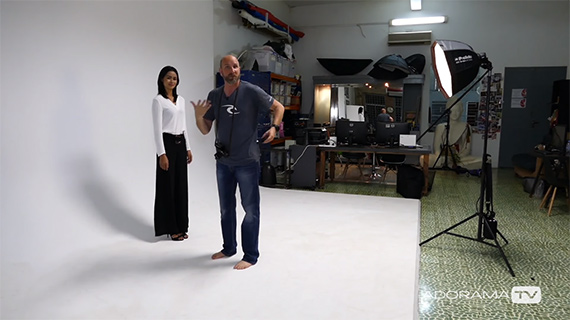
True to the concepts of the Inverse Square Law, the wall now appears white.

Here’s the takeaway. If you want a white background, place your subject as close to the wall as possible and place the light source far away. On the other hand, if you want a dark background, place your subject close to the light source and farther away from the wall.
Go to full article: How to Use a White Backdrop with Studio Portrait Photos
What are your thoughts on this article? Join the discussion on Facebook
PictureCorrect subscribers can also learn more today with our #1 bestseller: The Photography Tutorial eBook
The post How to Use a White Backdrop with Studio Portrait Photos appeared first on PictureCorrect.
from PictureCorrect https://ift.tt/2kxkAZu
via IFTTT
sunnuntai 27. toukokuuta 2018
PictureCorrect.com: Film Photography is Still Alive
This is 2018, and every few months or so, photography technology makes a giant leap forward. This is the era of digital photography, well and truly. More and more people are taking up photography because it is extremely easy to do so. And yet, there are people who have persisted with film. Not only that, there’s a new bunch of young photographers who are rediscovering the magic of film. STORYHIVE tells their story:
Why would someone use a film camera when it’s insanely more convenient to shoot with a smartphone? The reasons are as varied as the individuals who are pursuing this threatened form of visual expression. This short film by Take Kayo is an attempt to find out as many reasons and as many justifications as he can from those who are keeping this art alive.
“I shoot on film because there is a certain level of intimacy and craftsmanship that comes into the image. Anything that has to do with a computer kind of distances me from the actual photograph. So, I love the tactility and just the medium itself being so physical.” –Mario Delion, Graphic Design Student
Kathy Kinaken, an analogue process specialist and an 8 x 10 shooter says,
“My favorite film is a silver gelatin emulsion that I coat on glass. Basically I make my own film. I prefer film over digital. I think it’s the hands-on nature of it. In the end you have a physical object. The photograph is a physical object as opposed to the photograph as a digital file.”
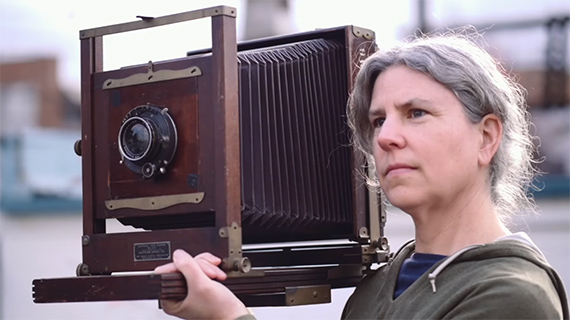
The hands-on nature of film photography can’t be replaced with digital technology.
Greg Girard, who is a professional photographer and has shot film all his life, argues that every film type has a characteristic and a palette that you get to know about over the years. Digital does not have a characteristic.
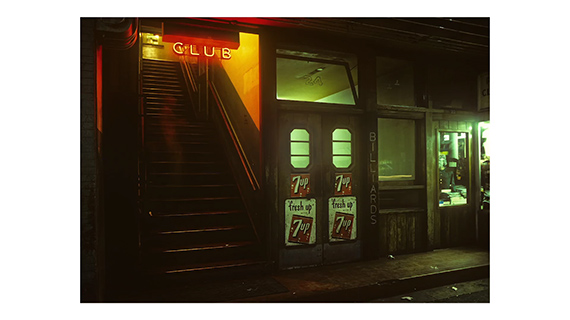
Film photography has unique character.
“The reason I don’t shoot digital, on the other hand, is that I find it problematic. That a digital file has no inherent characteristics and you have to introduce them. And so it just seems to me I might as well keep shooting film as it gives me what I want.”
On the other hand, professional photojournalist John Lehmann shoots film only when the story matches with the kind of equipment that he uses.
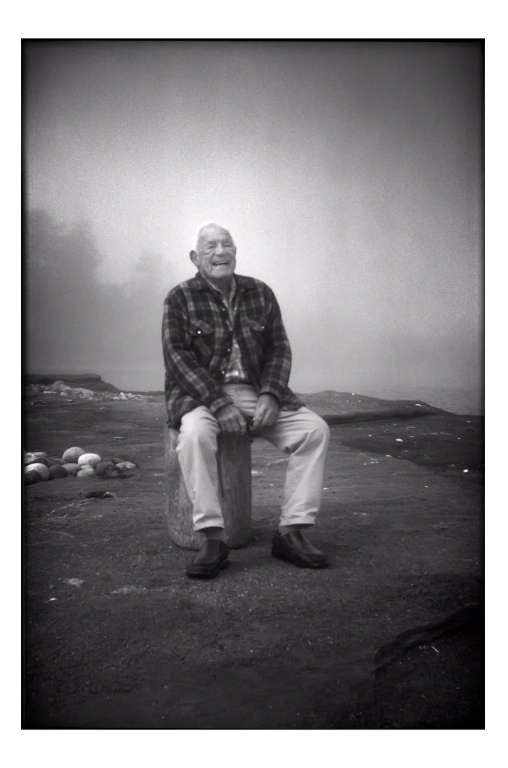
Using old technology can match the circumstances of a photography shoot.
“I shot a man that was turning a hundred. So I tried to find a camera that was over a hundred years old, and I found this Kodak Brownie. Fixed 120 film, fixed focus, fixed light. It was difficult to use. I probably put five or six rolls through it to make sure I had something usable.”
Kayo’s journey took him to Hong Kong and the mecca of film photography in 2018. He even met David Chan, who runs a vintage camera shop that sells probably every film camera that was ever made.
This video is no doubt a fascinating journey into a world that continues to thrive in the deluge of digital technology.
Go to full article: Film Photography is Still Alive
What are your thoughts on this article? Join the discussion on Facebook
PictureCorrect subscribers can also learn more today with our #1 bestseller: The Photography Tutorial eBook
The post Film Photography is Still Alive appeared first on PictureCorrect.
from PictureCorrect https://ift.tt/2IPDOnv
via IFTTT
lauantai 26. toukokuuta 2018
PictureCorrect.com: 7 Photography Composition Tips You Don’t Want to Miss
Photography composition, like any art composition, depends on individual preference. Nevertheless, there are some rules which may be a great help to photographers. Having said that, rules are, in my opinion, something which you have to work with well, get comfortable with, and then try to go beyond (i.e., break them).
What I’d like to share here is not a list of textbook based rules of photography composition; instead, I’d like to share how to get creative around the basic rules to get amazing photos.
1. The rule of thirds is still important. When you want to play around with photography composition, the basic foundation you should be comfortable with is the rule of thirds. This is simply where the viewer’s eyes go when they see your images.

Photo by Thomas Hawk; ISO 100, f/2.0, 1/8000-second exposure.
2. Move away from common angles. An image of flowers taken from the side is boring. Try to take it from a lower angle and capture the blue sky along with the flowers. Not only is the color combination more attractive to the eyes, but the impact of low angle strengthens the effect of the flowers.
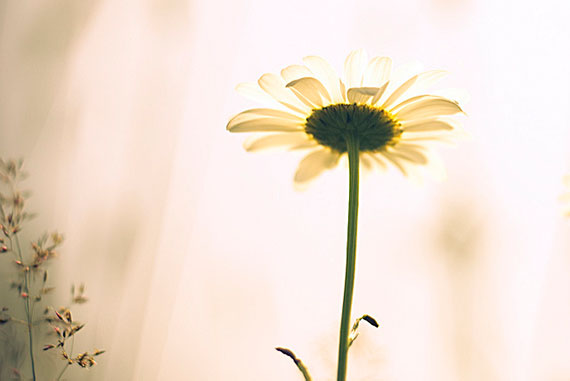
Photo by Sean McGrath; ISO 100, f/4.8, 1/4000-second exposure.
3. Simpler is stronger. Keep your image simple. Simple images leave stronger impressions on the viewer. Also consider that sometimes a background is not necessary. Filling the frame fully with the main object can be an alternative.
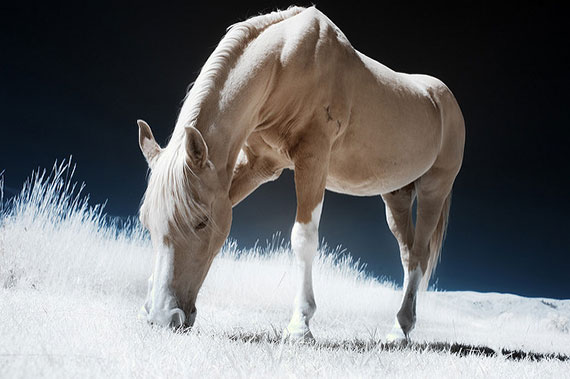
Photo by greg westfall; ISO 100, f/7.1, 1/80-second exposure.
4. Synergize. Reduce and eliminate elements that don’t support your main subject in the image. Composition is all about choosing angles that get rid of unnecessary objects and enhance your image.
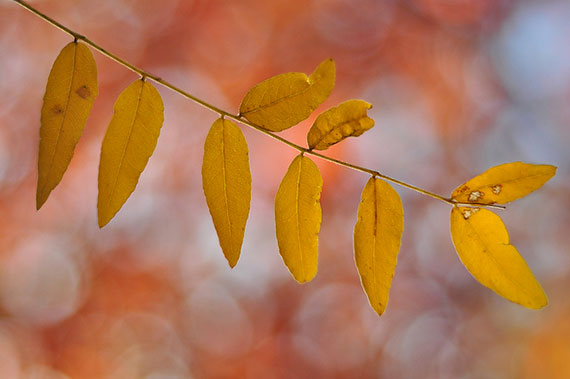
Photo by Rachel; ISO 200, f/1.8, 1/2500-second exposure.
5. Check and recheck your composition. You have to be quite a detail-oriented person when dealing with photography composition. Minor details, many times subtle, can damage or reduce the message you want to deliver.
6. Practice makes perfect. No matter how talented you are, the rule of thumb is that repetition is the mother of all skills. Take as many photos as you can. Learn from your experience to sharpen your instinct and improve your composition skills. The only way to gain the ability to produce high class images is through hours and hours of practice. I do hope you really like taking photos, or otherwise this process will be painful.
7. Learn from other people’s experience. I get inspired to explore the possibilities of composition by simply looking at other photographers’ work. In my early days in photography, I only shot pictures from eye level, and I put everything in the middle of the frame. Looking at pictures online really helped me to gain ideas and tap into a new paradigm of photography composition.
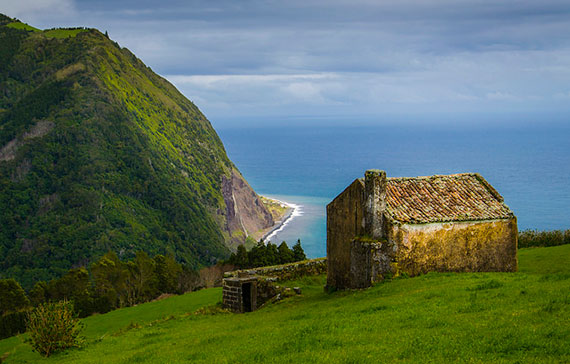
Photo by sherifx; ISO 100, f/5.6, 1/100-second exposure.
While composition has a lot of rules to it, it is still an art. There is no right or wrong in art. The only burden you have is the limit that you set for yourself. Keep exploring the possibilities to improve your photography.
Good luck and have fun!
About the Author:
Gde Putra is a hobby photographer who hopes to grow the love of nature among all people through his images.
Go to full article: 7 Photography Composition Tips You Don’t Want to Miss
What are your thoughts on this article? Join the discussion on Facebook
PictureCorrect subscribers can also learn more today with our #1 bestseller: The Photography Tutorial eBook
The post 7 Photography Composition Tips You Don’t Want to Miss appeared first on PictureCorrect.
from PictureCorrect https://ift.tt/2sgkaKa
via IFTTT
PictureCorrect.com: Interesting Photo of the Day: Sunset Reflection on Wood
Not every sunset photograph needs clouds to display the beauty of the disappearing light and warm tones. A striking foreground emphasizes the highlights and shadows cast by the last of that day’s sunlight. In this photograph, dead wood sets the scene for a gorgeous sunset in British Columbia:

“Sometimes you don’t need clouds to take a nice photo of the sunset!” by TritonTheDark. (Via Imgur. Click image to see full size.)
TritonTheDark shot this photograph of the West Dyke Trail in British Columbia was shot using a Nikon D750 with a Nikon 14-24mm lens. There’s a noticeable absence of clouds in this shot, a popular staple of sunset photography. This photographer effectively used his highly appealing foreground and radiant sunlight to frame a gorgeous sunset. He had this to say about the process:
“I do composites for panoramas, focus stacking, noise reduction, median stacking, controlling effective length of exposure and finally for fixing landscape trailing when using my equatorial mount. My goal when processing is to complement the composition and draw the viewer into the image, to help make them feel what I felt when I was observing the scene.”
Go to full article: Interesting Photo of the Day: Sunset Reflection on Wood
What are your thoughts on this article? Join the discussion on Facebook
PictureCorrect subscribers can also learn more today with our #1 bestseller: The Photography Tutorial eBook
The post Interesting Photo of the Day: Sunset Reflection on Wood appeared first on PictureCorrect.
from PictureCorrect https://ift.tt/2s93SU9
via IFTTT
torstai 24. toukokuuta 2018
PictureCorrect.com: Nature Photography’s Stuffed Anteater Scandal
It’s not often that the genre of nature photography becomes the subject of controversy. However, a recent scandal making headlines has proved to be so ludicrous that it caught the attention of comedy heavyweight Conan O’Brien:
For thousands of wildlife photographers around the world, one of the most anticipated events of the year is the announcement of the annual Wildlife Photographer of the year by the National History Museum in Britain. Out of thousands of submissions, one photograph entered by Brazilian photographer Marcio Cabral caught the eyes of the judges. Along with a monetary payout to the photographer, Cabral’s piece was also selected to be displayed on one the walls of the prestigious museum.
The problem? After careful consideration, a panel of experts determined that the star of the shot—a giant anteater poking its head into a grand fluorescent termite hill—was in actuality a stuffed specimen.
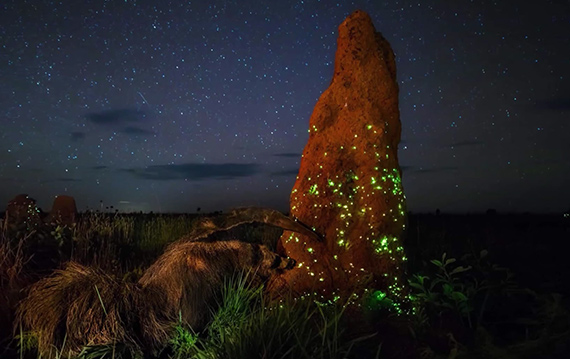
An investigation conducted by a panel of independent scientists, mammal experts, and professional taxidermists all came to the conclusion that beyond the shadow of a doubt, the photograph was staged. In fact, the anteater in question can be found greeting visitors venturing into Emas National Park in Brazil. Although the photographer insists that the photograph is entirely authentic, the image was recently disqualified and removed from the Natural History Museum because of its deceptive nature.
Artists worldwide appreciate the importance of a photograph’s integrity, scoffing at work that’s intentionally misleading. However, to an outsider, the situation as a whole is hard not to laugh at. Bringing the story to the public eye, Conan takes a few minutes to question the authenticity of some of Cabral’s other work…
Go to full article: Nature Photography’s Stuffed Anteater Scandal
What are your thoughts on this article? Join the discussion on Facebook
PictureCorrect subscribers can also learn more today with our #1 bestseller: The Photography Tutorial eBook
The post Nature Photography’s Stuffed Anteater Scandal appeared first on PictureCorrect.
from PictureCorrect https://ift.tt/2ILYJb2
via IFTTT
keskiviikko 16. toukokuuta 2018
Axminster Photography Group Photos: Axmouth Splash 2

Axminster Photography Group Photos: Beach Steps

Axminster Photography Group Photos: Cheltenham Flyer

Axminster Photography Group Photos: Ethiopian Christians at Church of Holy Sepulchre, Bethlehem

Axminster Photography Group Photos: Liverpool reflections

Axminster Photography Group Photos: Marrakesh Window

Axminster Photography Group Photos: Monterey Aquarium-21

Axminster Photography Group Photos: Morris Minor bonnet

Axminster Photography Group Photos: Tabgha boat, Galilee

Axminster Photography Group Photos: Watering Cans

Axminster Photography Group Photos: Sea Eagle in Trollfjord

Axminster Photography Group Photos: Placid fjord

Axminster Photography Group Photos: Old Boiler

Axminster Photography Group Photos: Millenium Bridge

Axminster Photography Group Photos: Midnight surf








